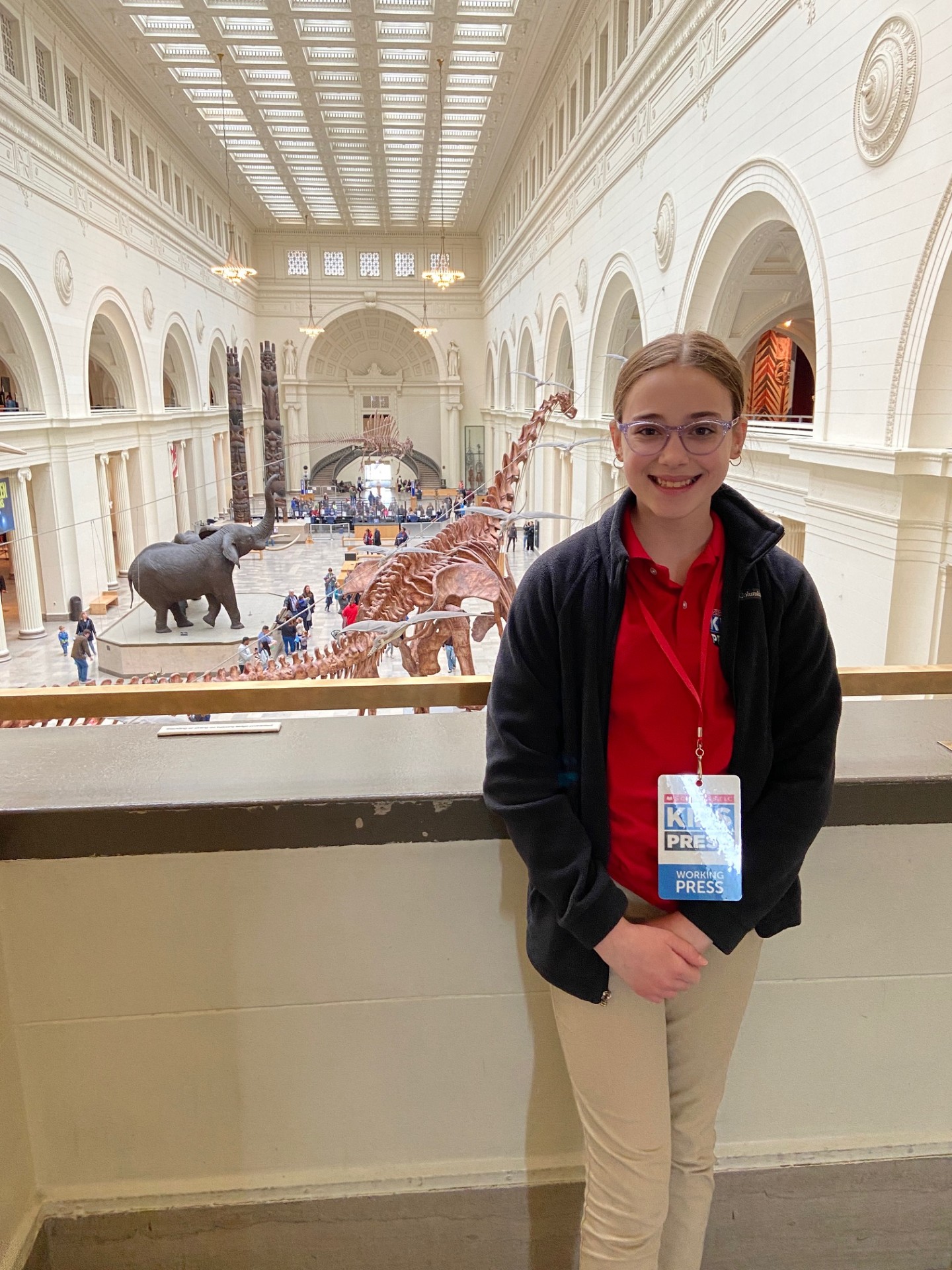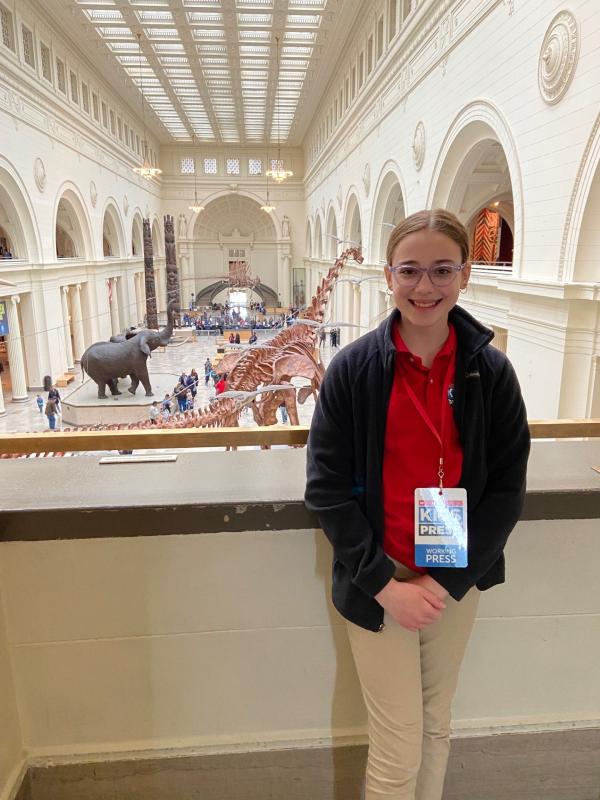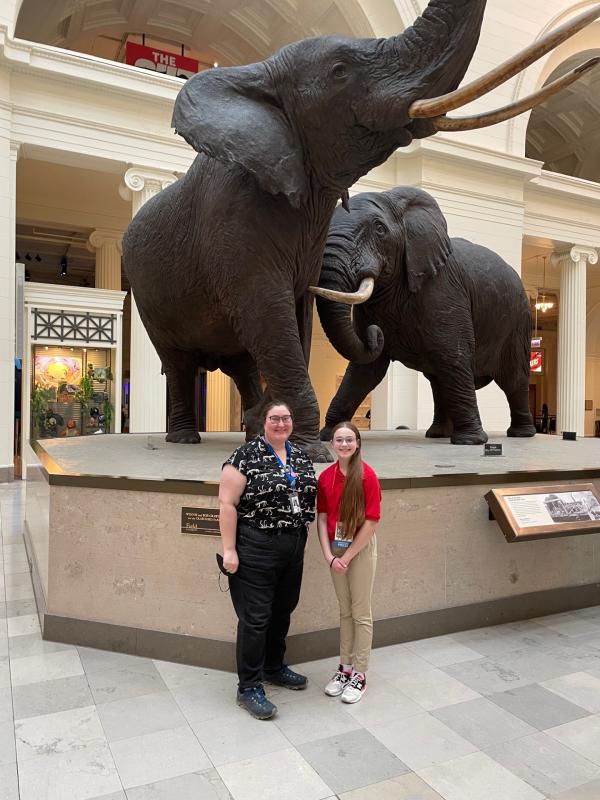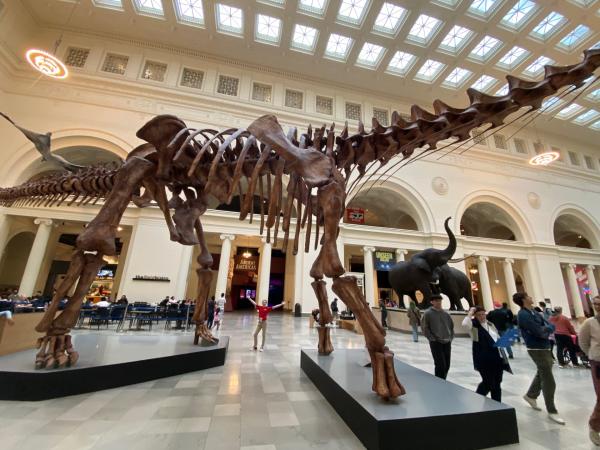KID REPORTERS’ NOTEBOOK
A Visit to the Field Museum in Chicago


Evy visits the Field Museum of Natural History in Chicago.
The Field Museum of Natural History is located in Chicago, Illinois. The museum, which is more than 480,000 square feet in size, is home to 40 million artifacts and specimens. These include dinosaur fossils, mummies, meteorites, and rare gems.
Fewer than 1% of the artifacts are on display, Kate Golembiewski, the museum’s public relations and science communications manager, told me during a recent visit. There simply isn’t enough display space to showcase all of the items in the museum’s collection.

Kate Golembiewski, public relations and science communications manager at the Field Museum, visits with Evy.
NAMED FOR A SUCCESSFUL BUSINESSMAN
The Field Museum is a key component of Chicago’s “Museum Campus” on Lake Michigan. It is located near other iconic venues, including the John G. Shedd Aquarium, the Adler Planetarium, Grant Park, and Soldier Field.
According to Golembiewski, the museum’s roots date back to 1893, when the World’s Columbian Exposition came to Chicago. The exposition was an influential social and cultural event that brought ethnic and cultural exhibits to the United States. Many of those exhibits were kept on display at the Field Columbian Museum, which became the Field Museum.
The museum is named after Marshall Field, a 19th-century entrepreneur who created the Marshall Field & Company department store. In the late 1800s, Field donated $1 million to help make the museum permanent. He also donated land to the University of Chicago.
Like many cultural institutions, the Field Museum is not without controversy. Regarding the World’s Columbian Exposition in 1893, civil rights leaders protested the refusal to include an exhibit about African American culture. Today, several display with items taken from American Indian tribes are covered. This is due to new federal regulations requiring tribal consent before exhibiting objects connected to Native American heritage. An exhibit called “Native Truths: Our Voices, Our Stories” seeks to shed light on rich cultural traditions and artifacts, many of which were plundered during colonial expansion.

Maximo the Titanosaur is the largest object on display at the Field Museum.
POPULAR ATTRACTIONS
When arriving at the Field Museum, visitors first encounter Stanley Field Hall. This large area has African elephants, flying pterosaurs, and the Field Museum’s largest item: Maximo the Titanosaur. The pterosaur is the earliest known vertebrate to ever fly.
Maximo is a patagotitan mayorum. That is the largest dinosaur discovered so far. It is 122 feet long and 28 feet tall.
From there, guests can explore many exhibits. Popular attractions include the DNA Discovery Center, a genetic research lab; Underground Adventure, a hands-on exhibit that “shrinks” visitors to 1/100th of their actual human size; Inside Ancient Egypt, which includes 23 human mummies, and Sue the Tyrannosaurus Rex.
The largest and most complete T. Rex fossil in existence, Sue is one of the most popular attractions.
“Every exhibit you see on the floor was years in the making,” Golembiewski said. The creation of any single exhibit requires a team that includes scientists, builders, graphic designers, and technical writers. An important element is for the team to identify, Golembiewski said, is “What’s the big picture story you’re trying to tell?”
Golembiewski described daily life at the museum as a “busy beehive” of activity. “The people working behind the scenes,” she said, “are a collection of the smartest, most creative, most interesting people I’ve ever met.”
